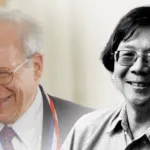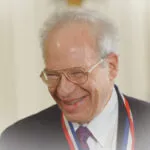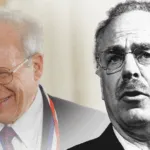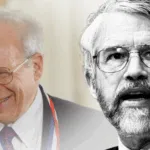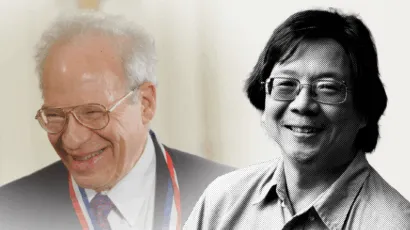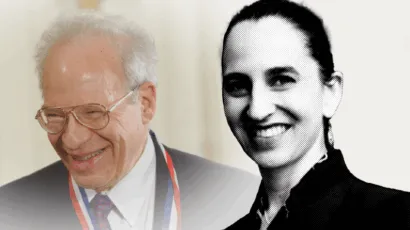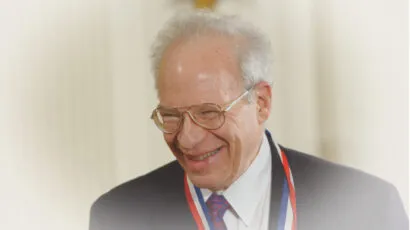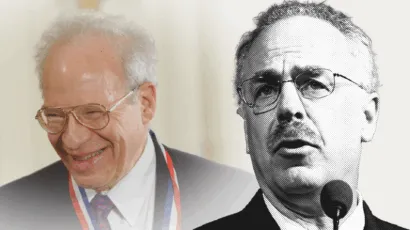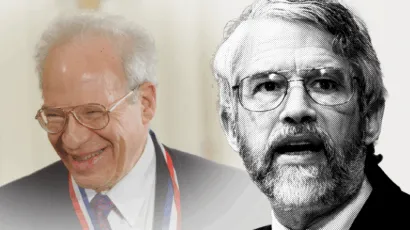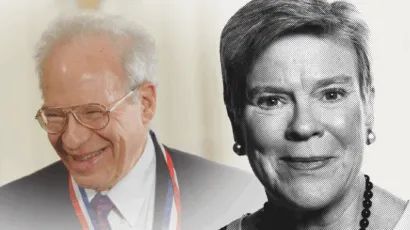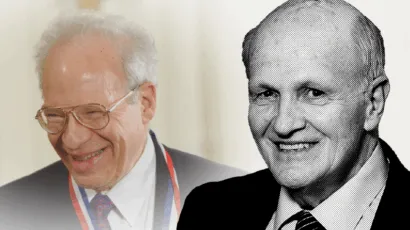Death Star: Ultimate weapon of mass destruction
By Timothy Westmyer | January 4, 2017
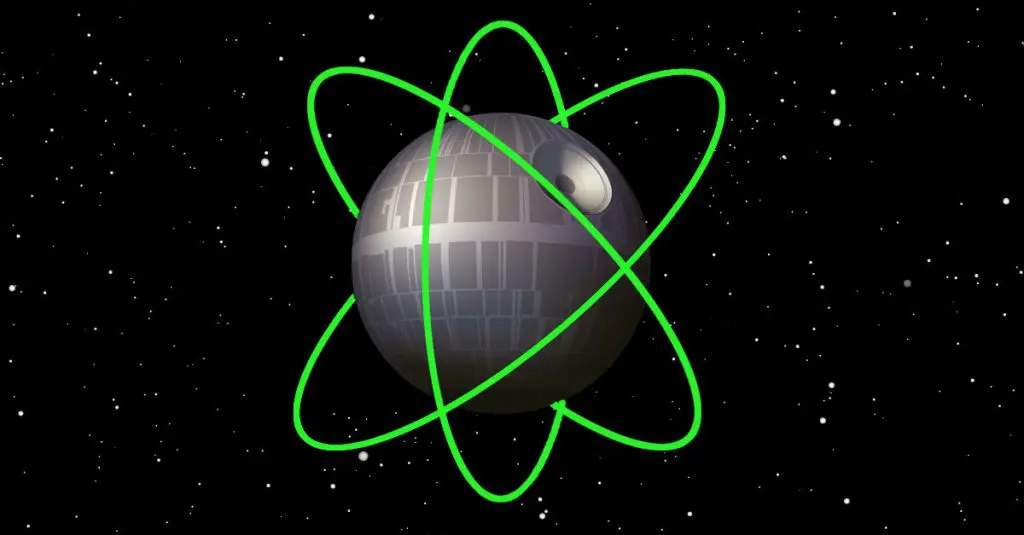
(Warning: This article contains plot spoilers.)
Since its 1977 premiere, the Star Wars franchise has been a pop culture phenomenon complete with eight feature films, a small library of novels, several television shows, and a seemingly endless line of toys. The original movie’s title became so ubiquitous that the term “Star Wars” was used in the 1980s to refer to President Ronald Reagan’s Strategic Defense Initiative—a phrase that aptly reflected that project’s ambitious plan to use lasers to destroy incoming missiles (a plan which, incidentally, still remains beyond our reach despite the billions of dollars invested, and which some observers have likened to a boondoggle). The popularity of Star Wars has been remarkably persistent: 2015’s The Force Awakens finished on top of the box office with nearly $940 million worldwide. Rogue One: A Star Wars Story just opened in mid-December of 2016 and has already topped $570 million.
The central plot of Rogue One involves our heroes stealing the blueprints to a new secret weapon of the evil Galactic Empire: the Death Star, a moon-sized, space-based battle station equipped with a laser capable of destroying an entire planet in a single stroke. There is hope that the plans could hold the key to finding a weakness in the station that could be exploited by the Rebellion to start a “chain reaction” and put an end to the weapon.
The Death Star, in Star Wars generally and particularly in Rogue One, serves as a stand-in for the nuclear weapons arsenal with all the accompanying nuclear imagery, deterrence theory, and dangers shown to the audience. While the Death Star premise has been previously analyzed by pundits in “back of the envelope” form as an engineering challenge, and as a semi-serious potential proposal for the national budget, the idea of Death Star-as-nuke has surprisingly not been given much attention, considering how omnipresent Star Wars has become in American popular culture. Rogue One deploys the Death Star as a visual, technical, and thematic stand-in for thermonuclear weapons.
Mushroom cloud city. On a purely visual level, Rogue One is full of nuclear imagery. By dialing down the Death Star’s destructive yield from the planet obliterator first seen in A New Hope (1977) to the level of a metropolitan-area destructive weapon, the movie is free to tap into the viewer’s experience with the nuclear explosive imagery in films such as Independence Day, Terminator 2, and The Day After, to name just a few. (And the idea of dialing down is reflected in the real world of nuclear weapons as well.)
When the Death Star’s massive green superlaser is fired against population centers and military targets, the weapon’s effects in the movie include massive fireballs, rising mushroom clouds, condensation rings, and expanding shockwaves. The spectacle is so grand that the Death Star’s fictional project director, Orson Krennic, declares “It’s beautiful” upon his first viewing—the same observation made by the real world’s Major Clyde Shields upon witnessing the first trial runs for the Trinity nuclear test as a pilot on a B-29 Superfortress observation plane in 1945.
In one of the movie’s final scenes, our heroes hold hands on the beach while waiting for the laser weapon’s approaching fireball and shockwave to vaporize them, much like the mushroom clouds, fireballs, and shockwaves from a real-world nuclear weapon. This linkage is exploited to great effect by Rogue One director Gareth Edwards, who also helmed the 2014 reboot of the radiation imbued Godzilla. Edwards believes a good horror story is “best served when there is guilt.” He said, “Godzilla is here because of our sins and our misuse of the power of nature, specifically using nuclear weapons and power.”
Given how the Death Star’s weapon is portrayed on the big screen in Rogue One, it is no surprise that Edwards was a digital artist on the 2005 BBC docudrama Hiroshima, which featured historical reenactments and computer-generated imagery of the 1945 atomic bombings.
Death Star doctrine. The Death Star is not just a powerful explosive device—the film franchise’s’s own version of the Soviet Union’s Tsar Bomba hydrogen bomb test, arguably the most powerful human-made explosion in history—it is also a deployable weapon capable of reaching targets at high speed while penetrating defensive systems and hardened bunkers. As a rebel commander puts it in Rogue One, the Death Star is a “means of mass destruction.”
The Empire used this weapon to maintain order, assuming that planets would remain loyal for fear of gazing at a Death Star dwarfing their horizon. This strategy of shock and awe should be quite familiar to anyone who has studied nuclear deterrence or lived through the Cold War, as illustrated by this debate between the reluctant engineer protagonist Galen Erso and his cruel Imperial taskmaster Orson Krennic in Rogue One:
Krennic: “We were this close to providing peace and security for the galaxy.”
Galen Erso: “You’re confusing peace with terror.”
Krennic: “Well, you have to start somewhere.”
Star Wars fans were first introduced to the Death Star when a demonstration of its power annihilated the movie’s peaceful planet of Alderaan. The fictional strategic theorist behind this act promised it would send a message to any other star systems—a premise that could have been borrowed from real events. In his 1965 book Atomic Diplomacy: Hiroshima and Potsdam, historian and political economist Gar Alperovitz made a similar argument in his analysis of President Harry S. Truman’s decision to drop atomic bombs on Japan. According to Alperovitz, Hiroshima and Nagasaki’s destruction was less about convincing Japan to surrender and more about creating leverage for the United States to use in future disputes with the Soviet Union. Even if the motivation was the island nation’s surrender, this strategy was only possible with nuclear weapons acting as what Secretary of War Henry L. Stimson deemed a “psychological weapon” of “such a revolutionary character that its use against the enemy might well be expected to produce exactly the kind of shock” desired. This is the Death Star’s mission statement.
A Death Star primer. The Death Star’s creation is at its most basic level an engineering challenge, one that massively eclipses the Manhattan Project’s creation of US nuclear weapons but shares a number of similarities, including the commitment of a massive amount of resources and human capital. (By some estimates, at its height, the Manhattan Project and its related R&D and construction projects, with all their subsequent contractors and sub-contractors, employed about one out of every 250 people living in the United States in making the bomb—or about ten percent of the workforce—over the course of the war. Just one Manhattan Project-related “secret city” created from scratch—later to be known as Oak Ridge, Tennessee—used more electricity than all of New York City, and was home to more than 75,000 people.) And both the fictional and real world builders of weapons of mass destruction evinced an obsession with attempting to keep information secure—something at which they did not always succeed.
The fuel to power the Death Star’s primary weapon brings to mind the real world quest for the plutonium 239 and uranium 235 used in the core of a nuclear warhead. According to Rogue One and Wookieepedia (a Star Wars wiki), the fuel for the Death Star’s weapon needs to be collected, refined, enriched, and configured in a particular arrangement to create a controlled chain reaction. In another Star Wars movie, The Force Awakens, the new Death Star is given an upgrade and the capability to wipe out multiple planets in a single launch, parallel to the use of intercontinental ballistic missiles and multiple independently targeted reentry vehicles.
Rogue One is also a fascinating case study of bureaucratic politics, with participants competing to secure praise and deflect blame. Orson Krennic, the director of the Advanced Weapons Research division of the Empire’s Imperial Military, was responsible for the battle station’s construction, which entailed recruiting the galaxy’s best engineers, juggling production delays, procuring vital raw materials, and trying to enforce a system of information security. It all brings to mind the Manhattan Project, which is often held up as a paragon in effort and achievement—what historian Richard Rhodes calls its “mythic resonance”—precisely because the project is considered to be an example of a collaborative success: convening an epic scope of talent, a massive scale of resources, and a collection of scientists from many countries.
What Star Wars teaches us about nuclear weapons. Beyond the mimicry of nuclear weapon blast effects and engineering challenges, the Death Star in Star Wars—and in Rogue One specifically—presents an interesting picture of nuclear weapons to moviegoers. First, those fighting the Empire are locked in what appears to be a never-ending cycle of needing to vanquish a series of new and improved Death Stars despite their previous successful battles, much like the constant race to restrain the use of ever-improved, smaller, lighter, more powerful, and more technologically advanced nuclear weapons. Anti-nuclear movements have evolved over the decades with reiterations such as the 1960s Ban the Bomb crusade, the 1980s Nuclear Freeze Movement, and today’s Global Zero and International Campaign to Abolish Nuclear Weapons efforts. These groups can count a number of victories in the form of nuclear test ban treaties, the reduction in nuclear weapon stockpiles, and a global norm against the use of nuclear weapons. But President Barack Obama’s plans to invest at least $1 trillion over the next 30 years on modernizing the nuclear triad, President-elect Donald Trump’s plea to “greatly strengthen and expand” the US nuclear capability, and reports that the Energy Department may consider resuming nuclear testing show that these battles are never truly over—they are just waiting for a sequel.
Second, the history of both nuclear weapons and Death Stars is rich with tales of sabotage, intrigue, and action. One of the best narrative elements of Rogue One is that the Rebellion is a real rebellion, with all its shades of gray. The “good guys” are insurgents who struggle after having to commit morally questionable acts in service to the greater good of the Empire’s downfall. In that respect, Rogue One has much in common with World War II movies like the Dirty Dozen, but it is also similar to the efforts in the early 1940s of saboteurs in Norway who stopped Nazi Germany’s ability to produce heavy water, an important element in making fuel for nuclear weapons. While the campaign was considered an incredible success, some of its operations resulted in the death of Norwegian civilians in bombing raids and aboard a ferry sunk by the saboteurs because it was carrying heavy water to Germany.
Third, there is an evolving and complicated relationship between the weapon’s creators and how they judge their role in bringing this new means of destruction into reality. In both Star Wars and the Manhattan Project, scientists and engineers collaborated to accomplish a seemingly impossible feat but later split into two groups: those opposed to their inventions, and those who argued in favor of even greater weapons. Leo Szilard, J. Robert Oppenheimer, Hans Bethe, Albert Einstein, Ted Taylor, and others expressed varying degrees of unease in creating nuclear weapons and strove for nuclear disarmament or other means of controlling their spread. Meanwhile, Edward Teller advanced plans for a hydrogen bomb (the Super) and ever more powerful and capable nuclear warheads.
Fourth, while the Empire is the sole possessor of a weapons technology and thus free from the constraints of Mutually Assured Destruction (similar to the brief window of time possessed by the United States before the Soviet Union developed its own deliverable nuclear weapons), the Empire still thought it prudent to keep its new weapon a secret before rollout was complete. Hence, a cover story is issued that is akin to the official report about a “remotely located ammunition magazine” explosion explaining away the very first nuclear test at Alamogordo, New Mexico in July 1945.
Finally, Rogue One underscores how precarious it is for any leader or organization—the Galactic Empire or otherwise—to have the kind of power afforded by nuclear weapons and Death Stars. The amount of destruction that can be inflicted on cities and planets in an instant with the push of a button, the turn of a key, or the flipping of a lever is dangerous, unsustainable, and insane. This fear inspired ordinary people in the Star Wars universe to summon the courage to rebel against seemingly impossible odds and to seek ways to reduce to the risk of their planet’s demise. This same motivation drives a new era of nuclear disarmament campaigns from younger generations and former Cold Warriors like Henry Kissinger, George Shultz, Sam Nunn, and William Perry.
Meanwhile, to its supporters, the Death Star was seen as an effective and rational tool to achieve peace through strength and bring order to a chaotic galaxy. Our own planet debates whether nuclear weapons have ushered in the end of world wars. Ultimately, the Death Star’s mere existence was not enough to end the rebellion. In our world, nuclear weapons have not been a panacea to security dilemmas or prevented a number of proxy conflicts, terrorism, and even wars initiated against nuclear-armed countries.
While Star Wars may take place a long time ago in a galaxy far, far away, the story’s appropriation of nuclear weapon themes is a reminder of the dangers posed by superweapons today, not so far from home.
Together, we make the world safer.
The Bulletin elevates expert voices above the noise. But as an independent nonprofit organization, our operations depend on the support of readers like you. Help us continue to deliver quality journalism that holds leaders accountable. Your support of our work at any level is important. In return, we promise our coverage will be understandable, influential, vigilant, solution-oriented, and fair-minded. Together we can make a difference.
Keywords: popular culture
Topics: Nuclear Weapons, Opinion


